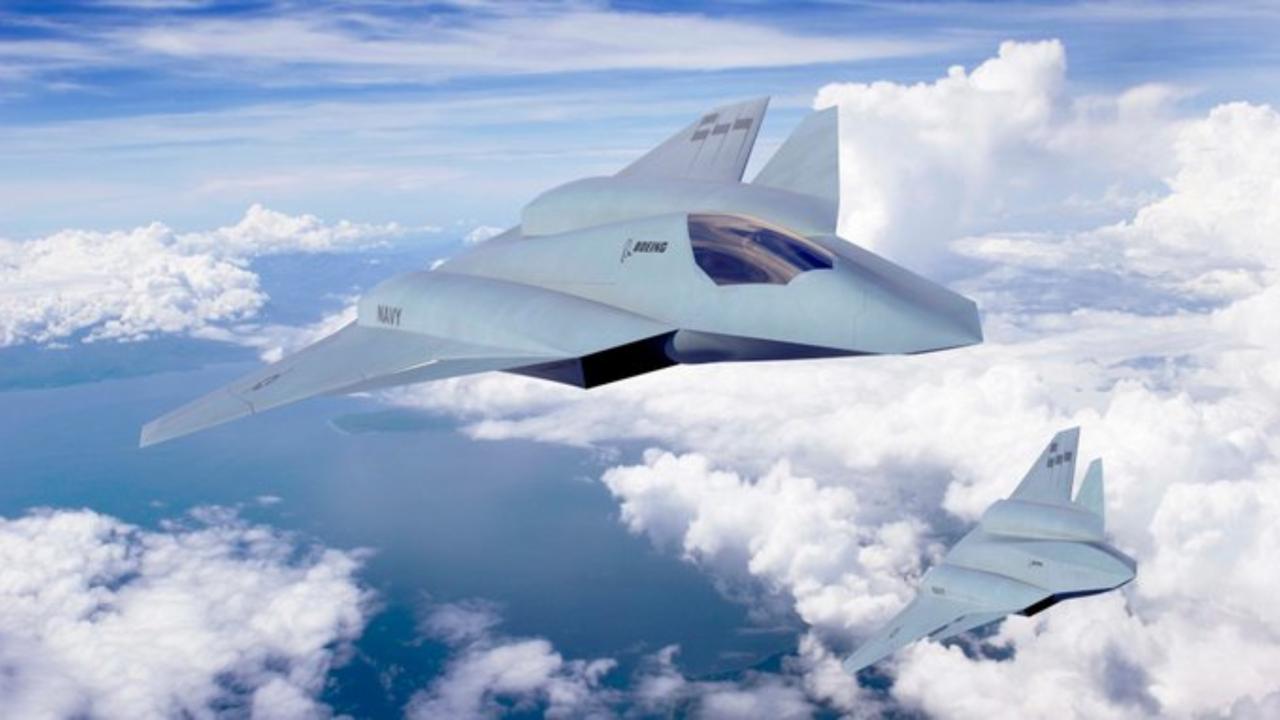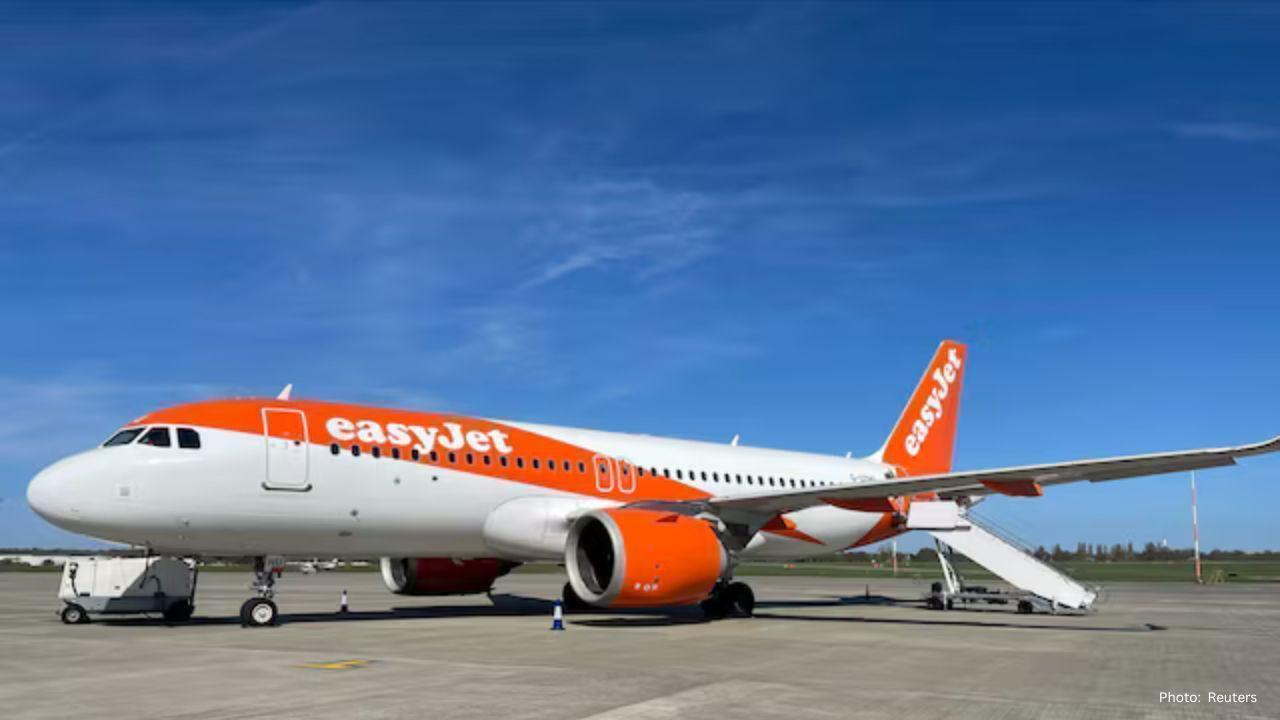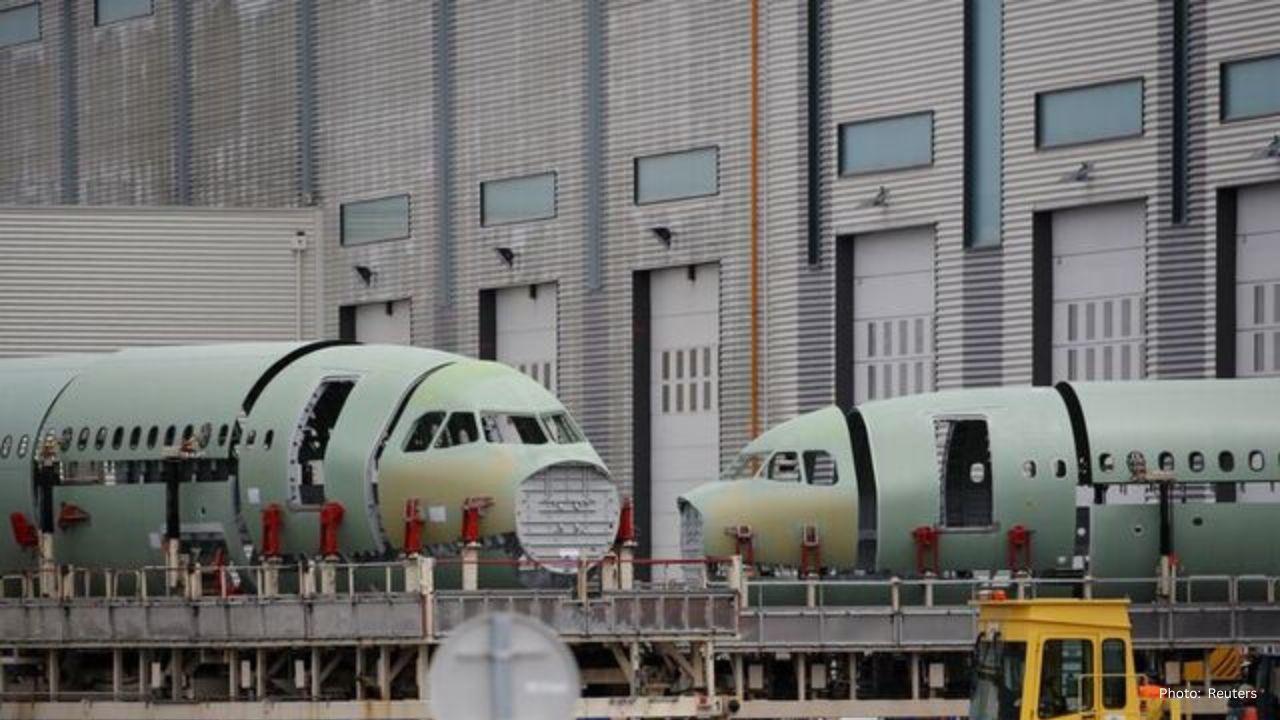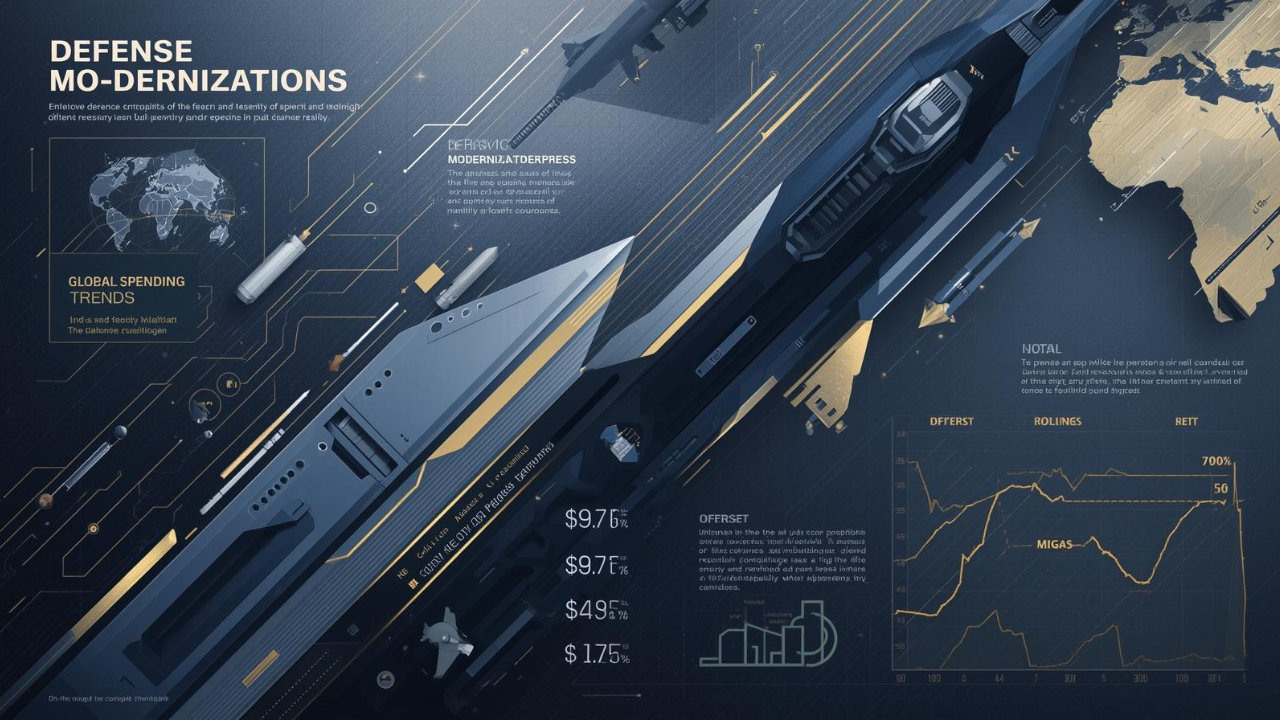
Post by : Amit
Photo : X / Heatloss
A Fighter Decision With Historic Weight
The U.S. Navy is edging closer to one of its most consequential aviation decisions in decades: the down-select for its next-generation fighter aircraft, the F/A-XX. Designed to replace the aging Boeing F/A-18E/F Super Hornet fleet, the F/A-XX is more than just another platform—it is the linchpin of the Navy’s strategy to maintain carrier-based air dominance into the 2030s and beyond.
This looming decision, set against intensifying great-power competition and rapid technological change, will have ripple effects across industry, supply chains, and strategy. As anticipation builds within the Navy’s aviation forces, the outcome could shape not only America’s carrier strike capabilities but also the future of its aerospace industrial base.
Why the F/A-XX Matters
The Super Hornet, once the backbone of carrier aviation, is approaching the limits of its effectiveness in a contested environment. While upgrades and service-life extensions have kept the aircraft relevant, Navy leaders are clear-eyed about its vulnerabilities against advanced threats like China’s long-range anti-ship missiles and next-generation fighters.
Enter the F/A-XX: a platform expected to deliver longer range, stealth, survivability, and seamless integration with unmanned systems. In an Indo-Pacific theater where distance and survivability dominate operational planning, the F/A-XX is seen as essential to ensuring carrier strike groups remain credible instruments of power.
For the Navy’s aviation forces, the program promises to reshape tactics, training, and force composition. For industry, it represents one of the last great opportunities to design and build a clean-sheet fighter in the United States.
The Contenders and the Stakes
Though details remain tightly controlled, it is widely believed that Boeing, Lockheed Martin, and Northrop Grumman are competing for the F/A-XX contract. Each brings unique strengths: Boeing as the incumbent Super Hornet provider, Lockheed with its F-35C pedigree, and Northrop with its stealth expertise honed on the B-21 bomber.
The competition is not just about technology but survival. A win could secure decades of production, sustainment, and modernization work, while a loss could force painful restructuring in an industry already stretched thin.
Analysts note that the decision will also shape the defense supply chain at large. From propulsion to avionics to advanced materials, the chosen design will dictate where billions of dollars in investment flow. For suppliers, being on the winning team could mean stability for years; being left out could prove existential.
Propulsion as the Decisive Factor
At the heart of the F/A-XX is propulsion—a defining factor in range, speed, and survivability. The Navy is expected to demand engines capable of significantly greater efficiency and thrust than legacy designs, potentially leveraging technologies from the Air Force’s Adaptive Engine Transition Program (AETP).
General Electric and Pratt & Whitney, the U.S.’s two primary fighter engine makers, are preparing to support whichever platform is selected. Both have invested in adaptive-cycle engines that promise greater fuel efficiency and thermal management, vital for powering advanced sensors and weapons.
For the Navy, propulsion is not just a performance requirement but a logistical one. Carrier operations demand engines that are durable, maintainable, and able to withstand the stresses of saltwater environments. The F/A-XX’s choice of engine will thus be as strategic as its airframe.
Balancing Capability and Affordability
While the Navy demands cutting-edge performance, affordability looms as a constant concern. The F-35 program has demonstrated both the potential and pitfalls of advanced fighter procurement, with rising sustainment costs drawing scrutiny from Congress.
Navy leaders have emphasized that the F/A-XX must strike a balance—delivering decisive capability without pricing itself out of operational viability. This tension will weigh heavily in the down-select decision, influencing design trade-offs on stealth, sensor integration, and modularity.
Some experts argue that the Navy may prioritize range and survivability over all else, even if that means fewer aircraft overall. Others believe affordability will force compromises that align the F/A-XX more closely with existing platforms, potentially narrowing the technological leap.
Integration With Unmanned Systems
A hallmark of the Navy’s Next-Generation Air Dominance (NGAD) concept is man-unmanned teaming. The F/A-XX is not envisioned as a lone wolf but as the quarterback of a distributed network, directing unmanned aircraft for strike, reconnaissance, and electronic warfare.
This integration requires advanced networking, secure datalinks, and artificial intelligence to manage multiple assets simultaneously. If successful, the F/A-XX could multiply the effectiveness of carrier air wings without requiring massive increases in manned platforms.
The decision thus extends beyond the airframe to the digital backbone that will enable manned-unmanned cooperation. In many ways, the F/A-XX will be judged less on what it can do alone and more on how well it can orchestrate a team.
Strategic Context: Indo-Pacific Pressures
The F/A-XX down-select comes as the Navy faces its most demanding theater: the Indo-Pacific. China’s rapidly modernizing military, particularly its long-range missile capabilities and expanding fighter fleet, presents a direct challenge to carrier operations.
Longer-range fighters are essential to keeping carriers relevant in this environment. Without them, carrier strike groups could be forced to operate at standoff distances that diminish their effectiveness. The F/A-XX, with extended range and survivability, is intended to restore the carrier’s reach.
In this context, the program is more than an acquisition decision—it is a statement about the Navy’s commitment to carrier-based power projection in the 21st century.
Industry Uncertainty and Workforce Implications
For the aerospace industrial base, the down-select decision could be seismic. The U.S. has not fielded a clean-sheet Navy fighter since the Super Hornet in the 1990s. With the Air Force pursuing its own NGAD program, the outcome of both competitions will determine whether multiple fighter production lines can survive in the U.S.
A loss in the F/A-XX contest could push Boeing further out of the fighter business, while a win could revitalize its St. Louis operations. Lockheed, already heavily invested in the F-35, could either consolidate its dominance or face renewed pressure. Northrop, if successful, could reassert itself in the fighter space after decades on the sidelines.
The workforce implications are equally stark. Tens of thousands of jobs across engineering, manufacturing, and supply chains hang in the balance, making the program a major political as well as military decision.
Congress and the Politics of Procurement
No major defense acquisition occurs in a vacuum, and the F/A-XX will be no exception. Congress, already wary of escalating costs in advanced fighter programs, will play a decisive oversight role.
Regional politics will also come into play, as lawmakers advocate for the industrial bases in their districts. Expect intense lobbying from states tied to Boeing, Lockheed, and Northrop facilities, each making the case for why their design is not only the best for the Navy but also the best for American jobs.
Lessons From the F-35
The shadow of the F-35 looms large over the F/A-XX program. While the F-35 has delivered game-changing capabilities, its development struggles and sustainment costs serve as cautionary tales. Navy leaders are determined to avoid similar pitfalls.
One lesson is the importance of modularity—designing systems that can evolve without requiring costly redesigns. Another is transparency in cost and schedule management, ensuring that stakeholders have realistic expectations from the start.
How well the Navy internalizes these lessons could determine not just the success of the F/A-XX but also its credibility in Congress and the public eye.
The Waiting Game
For now, the Navy’s aviation forces are waiting—flying Super Hornets and F-35Cs while preparing for a new era. Pilots, maintainers, and commanders alike are eager to see what shape the F/A-XX will take, knowing it will define their missions for decades.
The down-select is more than a procurement milestone; it is a moment of generational change. Whatever design is chosen will carry the Navy’s hopes for air dominance, its industrial base’s fortunes, and the nation’s strategic posture into the mid-21st century.
A Decision That Will Define Decades
As the U.S. Navy prepares to select its next fighter, the stakes could hardly be higher. The F/A-XX down-select is not just about replacing the Super Hornet. It is about defining the future of carrier aviation, sustaining the aerospace industrial base, and ensuring the Navy remains a dominant force in an increasingly contested world.
The decision will echo through strategy rooms, factory floors, and congressional chambers alike. For America’s Navy and its aviation forces, the question is not simply which company wins—but whether the chosen aircraft can deliver the reach, resilience, and integration needed for the battles ahead.
In the words of one naval analyst, “The F/A-XX will not just be another airplane. It will be the symbol of whether carrier airpower can adapt and prevail in the 21st century.”
Avaiton










Advances in Aerospace Technology and Commercial Aviation Recovery
Insights into breakthrough aerospace technologies and commercial aviation’s recovery amid 2025 chall

Defense Modernization and Strategic Spending Trends
Explore key trends in global defense modernization and strategic military spending shaping 2025 secu

Tens of Thousands Protest in Serbia on Anniversary of Deadly Roof Collapse
Tens of thousands in Novi Sad mark a year since a deadly station roof collapse that killed 16, prote

Canada PM Carney Apologizes to Trump Over Controversial Reagan Anti-Tariff Ad
Canadian PM Mark Carney apologized to President Trump over an Ontario anti-tariff ad quoting Reagan,

The ad that stirred a hornets nest, and made Canadian PM Carney say sorry to Trump
Canadian PM Mark Carney apologizes to US President Trump after a tariff-related ad causes diplomatic

Bengaluru-Mumbai Superfast Train Approved After 30-Year Wait
Railways approves new superfast train connecting Bengaluru and Mumbai, ending a 30-year demand, easi